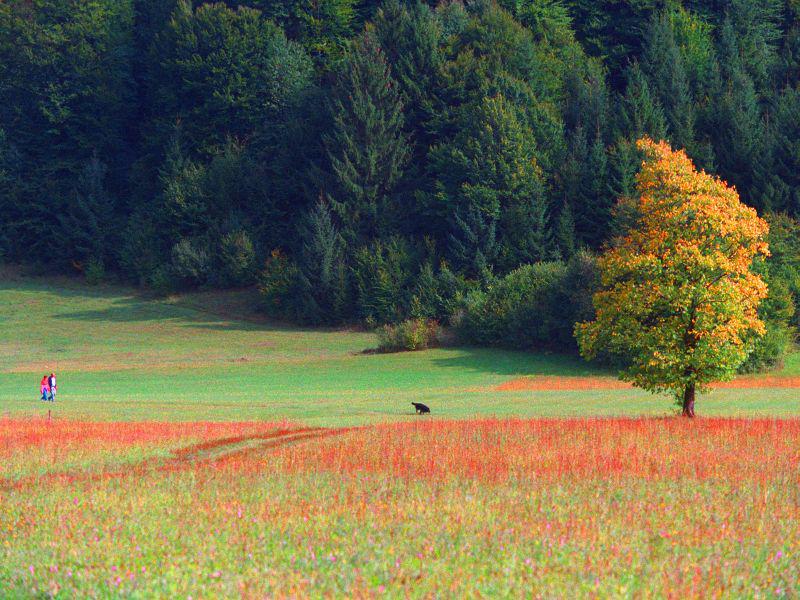
The eastern Slovenian town of Ptuj is noted for its medieval architecture, and draws eager visitors from around the world. Not far from Ptuj, however, lies an altogether quieter world -- an area of protected nature known as Šturmovci, where signs of human intervention are difficult to spot. The little-known reserve contains some of the country’s most unusual natural landscapes.
The Šturmovci Landscape Park consists largely of a floorplan between the Drava and Dravinja Rivers. The abundant flora of the area is especially suited to grow on terrain that is covered in water for much of this year. Even the trees – white willows – have evolved to thrive in moist soil.
The fields of the park are the home of many flowers, including a rare native orchid known as čebeljeliko mačje uho – the “bee-like cat ear.” Particularly rich in plant life are special fields known as krči, which were created centuries ago when farmers cut down flood-prone woods to create pastures.
Some of the flowers grow on the banks of Hajdinska Studenčnica, a stream that bubbles to the surface in the park and is known for its exceptional purity. The creek also serves as a habitat for the rare yellow iris, which grows on its frigid waters.
The entire park is a wonderland of landscapes that are rarely found in Slovenia, including sand dunes whose appearance changes with the prevailing winds. Its animal life is just a diverse; more than 200 species of birds call Šturmovci home, including rare species such as the sandpiper, the little ringed plover, and the kingfisher. The wetlands are just as hospitable to dragonflies, and several rare species have discovered that the area makes for an ideal habitat.
In 1979, the park was officially protected by the state; it later became a Natura 2000 protected area and was recognized as one of the Important Bird Areas in Europe. Today, an extensive interpretive trial allows visitors to take a closer look of a unique, still-wild part of eastern Slovenia.

































































